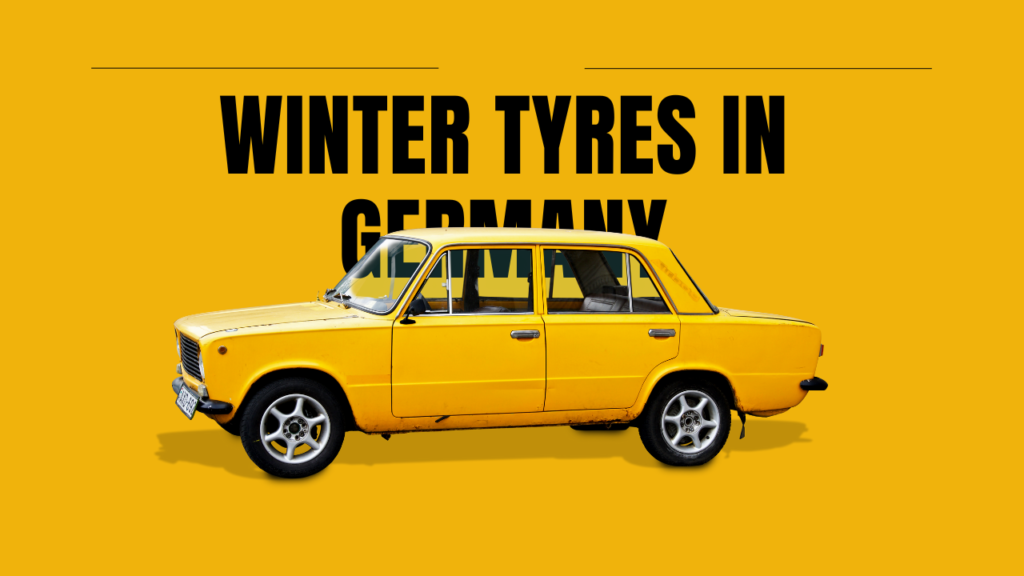When should I fit winter tires in Germany? What is the fine if I don’t? What applies to tires for all seasons? Here are the most important questions about compulsory winter tires in Germany:
- In Germany, winter tires are compulsory depending on the situation
- Motorcycles are exempt
- 1.6 mm tread is compulsory, 4 mm is recommended.
When are winter tires compulsory in Germany?
In Germany there is no general obligation to use winter tires, but a situational obligation (§ 2 (3a) StVO). This means that in winter conditions, i.e. in conditions of ice, slippery snow, mud, ice or frost, you can only drive on winter tires. The rule from October (Oktober) to Easter (Ostern) (O to O) is a rough indication, but has no legal relevance.
The situational obligation concerning winter tires is deemed to be fulfilled if the winter tires are fitted on all wheel positions, i.e. on all four wheels.
How can I recognise a winter tire?
Today’s winter tires can be recognised by the Alpine symbol, a mountain icon with a snowflake. In addition, M+S marked tires are considered suitable for winter use until 30 September 2024 if they were manufactured by 31 December 2017.
What fine applies for driving without winter tires in Germany?
The offence is punishable by a fine of €60 for the driver or €80 if other people are obstructed. The owner of the car will be fined €75 and will also receive one point.
Are there any exceptions to the winter tire requirement in Germany?
The winter tire requirement in Germany does not apply to the following vehicles, among others:
- single-track motor vehicles (e.g. motorcycles)
- commercial vehicles used in agriculture and forestry
- motorised invalid carriages as defined in § 2 number 13 FZV.
Any person wishing to drive a vehicle to which this exemption applies with summer tires in winter conditions must comply with a number of rules, in addition to any generally applicable obligations. These include checking, before each departure, that the planned journey is necessary because the destination cannot be reached by alternative means of transport. In addition, it is not permitted to exceed a speed limit of 50 km/h.
How much tread do winter tires in Germany need?
The minimum depth required by law for winter tires in Germany is 1.6 millimetres. However, for safety reasons, ADAC recommends at least four millimetres. Also, a replacement after no more than six years, because by then the rubber compound has become so hard that grip decreases at low temperatures.
Are all-season tires enough?
All-season tires are winter tires in the legal sense if they have the “Alpine” symbol or the M+S marking (during the transition period mentioned above). If neither of these markings is present, the tire is not an all-season tire but a summer tire.
What happens if I have an accident in winter with summer tires?
In the event of an accident caused by gross negligence, your Kasko insurance benefits may be reduced. In the case of an accident for which you are not at fault, there may also be problems with the other party’s motor third party liability insurance because, depending on the individual case, you may have to accept part of the blame.
Are winter tires compulsory in Germany for rental cars?
Car rental companies are obligated to provide a vehicle that is in working order and ready to be driven. This is not the case if you rent a vehicle with summer tires in winter conditions. In this case, the customer can refuse to pick up the vehicle.
Also, the car hire company, as owner, risks a fine if it hands over a vehicle without winter tires in winter conditions. Car rental companies often charge an additional fee for winter tires.
Can I drive on winter tires in summer?
As the law does not expressly prohibit driving on winter tires in summer, they can in principle still be used in summer.
What applies in the case of a flat tire?
If you change your car tire after a breakdown and you only have a summer tire with you, you do not need to fear any penalty. With this improvisation, the journey can be continued with caution; however, a winter tire should be fitted at the next opportunity.
Compulsory winter tires abroad: What should I bear in mind?
Other countries have different rules for the use of winter tires and snow chains. You should clarify what is recommended in Austria, Switzerland, Italy (South Tyrol) and other European countries before travelling there.
ADAC recommendation
In the cold season, always fit tires with the abbreviation “M+S” (beware of the transition period mentioned above) or with the symbol “Alpine”, not only because of the situational regulations for winter tires. The main concern is the safety of you and your fellow passengers. Also remember: the consequences of a small “slip” can cost many times more than a set of winter tires.

